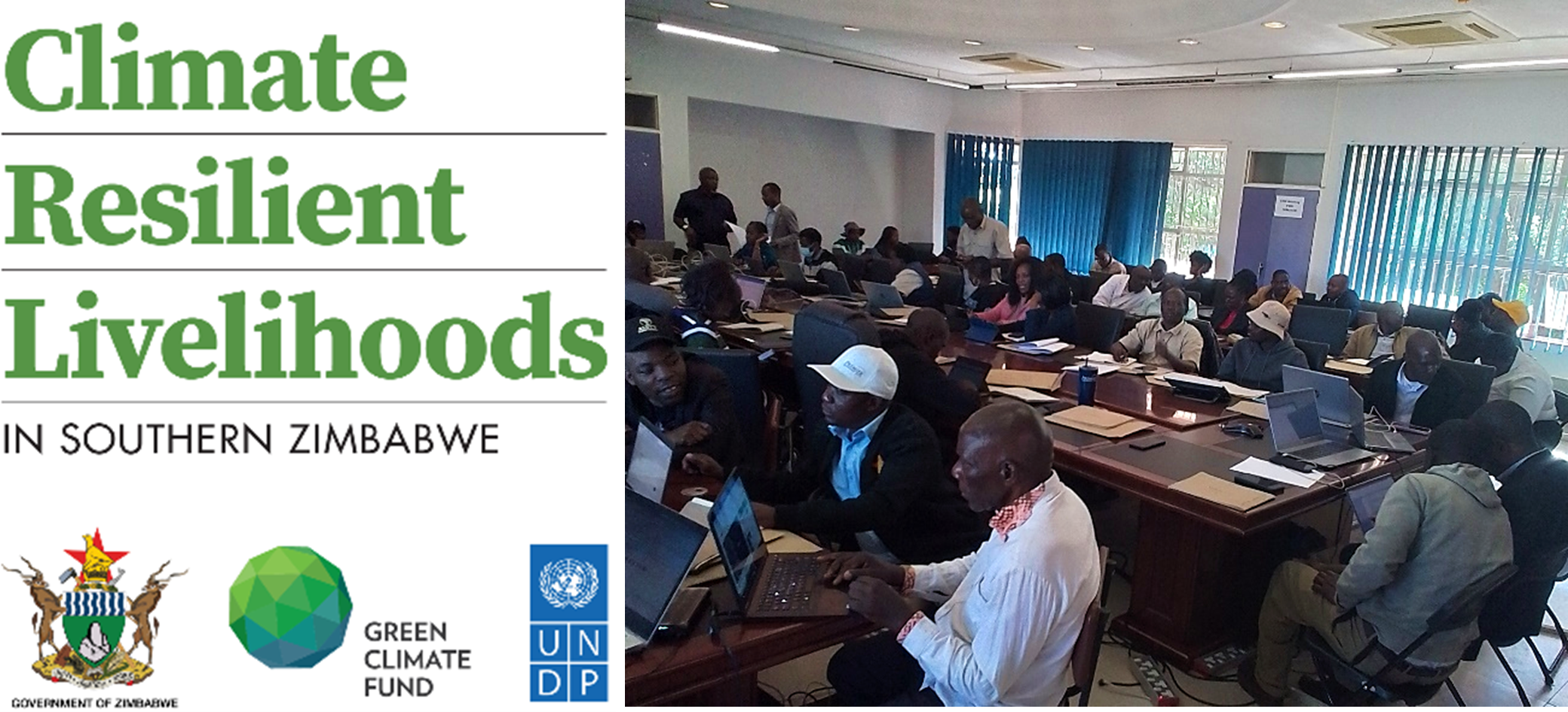The Green Climate Fund (GCF)
The Green Climate Fund (GCF) in Zimbabwe Project Summary
The Green Climate Fund (GCF) Project “Building the climate resilience for vulnerable agricultural livelihoods in Southern Zimbabwe” is a seven-year collaboration between the Government of Zimbabwe and the United Nations Development Programme (UNDP). The project aims to strengthen the resilience of agricultural livelihoods for vulnerable communities in southern Zimbabwe particularly women amid growing climate risks and impacts. The initiative contributes to two key GCF impact areas:
1. Enhanced resilience and improved livelihoods for the most vulnerable people, communities, and regions.
2. Increased resilience of health, well-being, and food and water security among vulnerable smallholder farming communities in southern Zimbabwe.
The project is being implemented by the Government of Zimbabwe through the Ministry of Lands, Agriculture, Fisheries, Water and Rural Development (MoLAFWRD). It operates in 15 districts across three provinces: Manicaland, Masvingo, and Matabeleland South. The project is structured around three strategic components:
1. Improving access to water for climate-resilient agriculture through the development of climate smart irrigation systems and efficient water resource management.
2. Enhancing access to climate-resilient agricultural inputs and practices, while strengthening market linkages.
3. Expanding access to weather, climate, and hydrological information to support climate-resilient farming practices.
As one of the Responsible Parties (RPs) in the project, the Meteorological Services Department (MSD) is jointly managing strategic component iii, with the Zimbabwe National Water Authority (ZINWA). During the implementation of the project, the Department has strengthened its meteorological observation network through the Automatic Weather Stations (AWS) and Automatic Rain Gauges (ARG) that have been installed in selected irrigation schemes/centres in Manicaland, Masvingo and Matabeleland South provinces. Meteorological data from the equipment will contribute to improving access to tailored weather and climate information by the agricultural communities to enhance food security in the face of climate change.
Further to this the Department has been working on data integration, which incorporates so far data from the manual and automated stations. This exercise result in increased data access for forecasting and climate monitoring as it is addressing the backlog in the digitizing of data by decentralizing this to outstations. The Department has continued to benefit from the project through capacity building which is essential in improving operations across the weather and climate services value chain.


